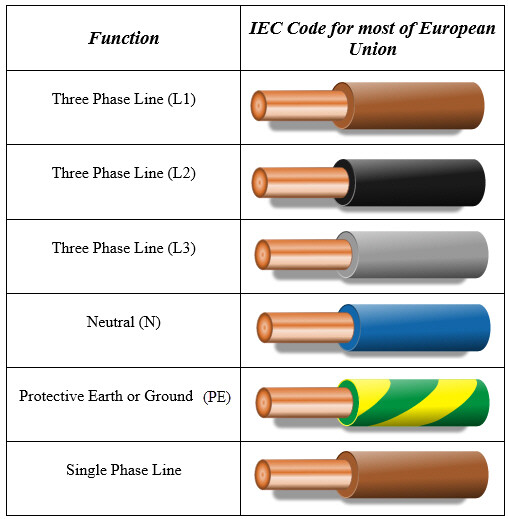Does anyone know where I can definitive information relating to the colour coding of the text or lines/markings on the outer sheathing on electric cabling? I though that I understood for example that yellow indicates 2.5 mm2 conductors and blue 1.5 mm2. Now I have seen purple for 1.5 mm2 so I am puzzled. Are there any guidelines I can read that give this information?
1,5 = reddish
2,5 = yellowish
4 = notsureish
6 = blueish
16 = greyish
Thank you but are you sure’ish? Where did you derive this information?
He is an established French Electrician.
Is the degree is “ish” and tongue angle codified anywhere?
I still like to read regulations and facts when possible to confirm what I am told by ‘experts’. I actually question 1,5 = reddish for example. I think that blue indicates 1.5
possibly a useful link…
EDIT: This link does NOT answer the original question… but it certainly does give some interesting ideas and information about getting/doing electrics at home… fascinating, especially while sipping a small glass of red… hic ![]() … so many sections to read through and so little time between sips…
… so many sections to read through and so little time between sips… ![]()
I’ve never seen that. I’ve always found blue to 6mm² & 1,5mm² to be red/pinkish.
I don’t believe the colouring is anything official. Nexans started it by putting the bands of colour on the side of R2V cable & it’s become an unofficial standard, but there’s no requirement to have any colour at all. Thankfully nowadays the actual specification (2X1,5, 3G2,5, 4X6, etc.) is either embossed or printed in white along with the meter markings.
If you have access to the actual conductors the smaller sizes are easy to spot without markings, once one has got one’s eye in, & you can tell by feel too.
@Stella - the OP isn’t questioning the individual conductor colour codes, but want to know the colour used on the sheath of multicore cabling (e.g. U1000 R2V) to tell you what sizes are within.
@gregca - here you go.
Notsureish describes our house electrics perfectly - I am pleased @Badger has confirmed that this is recognised technical description!
sorry… I have every faith in you… simply trying to find a link to satisfy the OP… and knowing nothing about electrics myself this seemed a reasonable try… ![]()
![]()
ooops… I’ll stick to cookery links… ![]()
That covers the individual conductor colours - we’re talking about a separate colour code on the sheath of PVC multicore cable to indicate current carrying capacity.
The convention for individual cables is simple enough - blue=neutral, green/yellow=earth and anything else is “live”. The modern standard for phase colours is brown/black/grey but red is common in French installations, as is black(with blue for neutral).
Here’s a handy chart
Edit: Ah I Badger and I crossed posts (and he won ![]() )
)
Apart from plain green or plain yellow, which are both very much “interdit” due to possible confusion with bi-coloured jaune/vert which is only ever used for earth.
Beware pre-1970 wiring that used to use plain green as phase!
Out of interest what did France use for triphasé when blue=neutral, red=L1 was common - I’m guessing it wasn’t red/blue/yellow as in the UK.
I think I found some when I did the kitchen which, along with a non-functional RCD at the time was a “shocking” discovery.
Fortunately I lived to tell the tale.
Where is the rest of the rainbow?
Some where over the other side ![]()
What Kansas? ![]()
Yes Dorothy ![]()
Yes but only at the weekends Toto.

